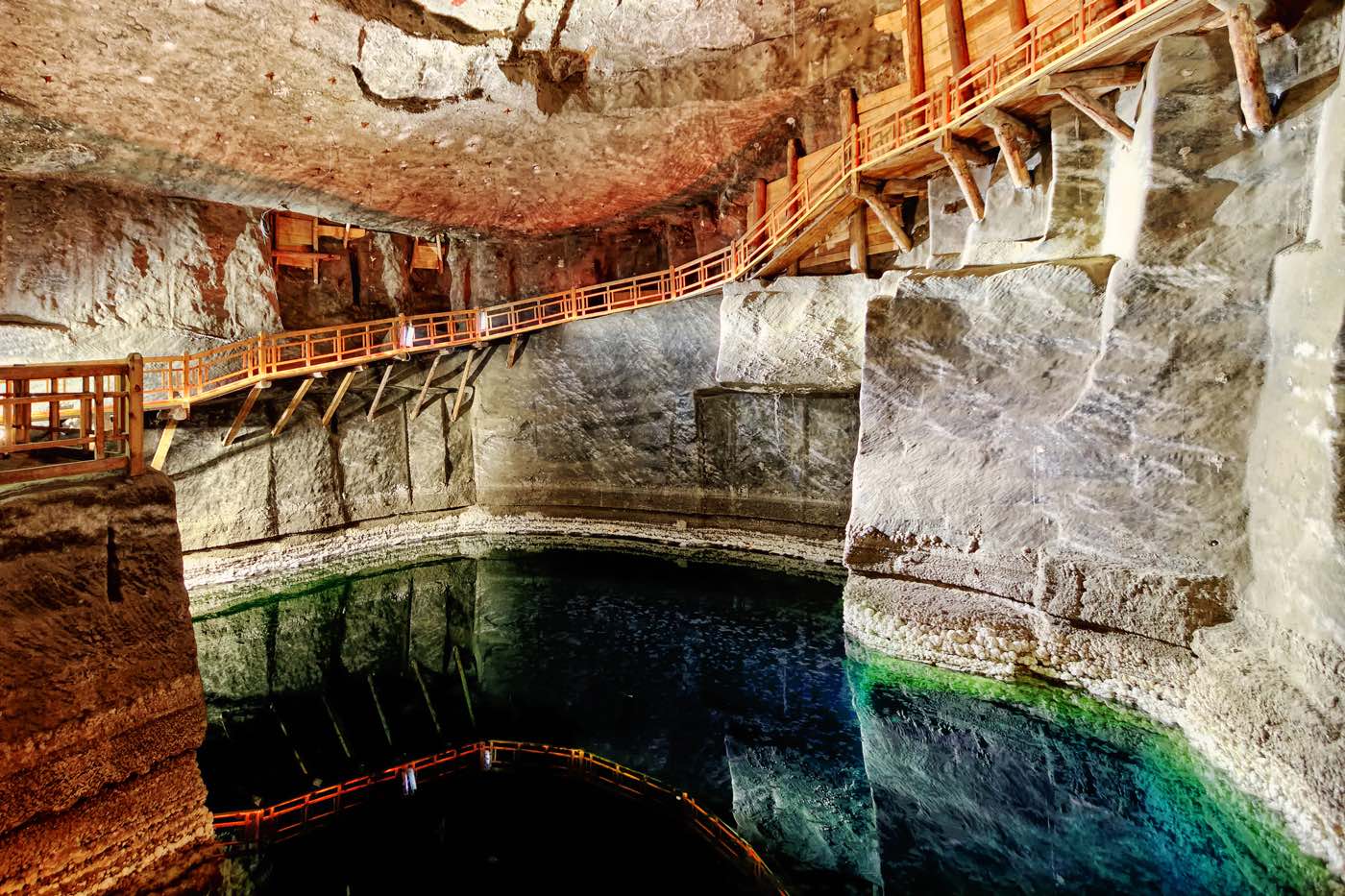Wieliczka Salt Mine
1. Krakow's salt mine is more than 700 years old
In the 13th century, the first ever mine shafts were unearthed in Wieliczka, a town, around 8 miles from Krakow. Commercial mining went on until 1996. At one point, the Germans turned the mine into a base.
2. The mine has a depth comparable to the Eiffel Tower's
The mine's deepest end goes as far as 1073 feet under the ground, beating the Eiffel Tower's height by 10 feet. The mine tunnels' total length is a mind-blowing 178 miles! To enter the mine, you would have to go below 380 stairs only to arrive at the first out of nine levels. Though the entire tour has more than 800 stairs, visitors may have the option to ride the lift to return to the surface.
3. The mine became a UNESCO World Heritage Site
The Wieliczka Salt Mine was not only listed as a UNESCO World Heritage Site but also was one of the first twelve enrolled in 1978, alongside Krakow’s historic center. In addition, the site includes Bochnia Salt Mine and Wieliczka Saltworks Castle.
4. Majority of the mine is built from salt
Although it's a salt mine, wooden beams exist in several of the tunnels; otherwise, the ceilings, floors, and walls are carved straight out of salt, including many reliefs and sculptures around the mine.
Probably the most extraordinary are all the crystals which hang from several of the mine's chandeliers; though appearing like glass, they’re really huge salt crystals originating from rock salt that were once being dissolved and reconstructed.
5. Salt helped preserve mine's tools
It's true that not everything in the mine was made of salt like buckets, winches, mining tools, and a few sculptures, which were built of wood, proving that salt is a superb preservative, for several of the apparatus and tools are still in great condition today.
6. A salt formation is called cauliflower
Although the majority of the mine's rock salt is dull grey in appearance, some batches assume a white fluffy look. The miners christened this cauliflower, probably not its official name.
7. Bungee jumping & hot air ballooning took place in the mine
Actually, a hot air balloon in 2014 rose 65 feet above the floor but for only 4 minutes. However, the tour guide admitted that this in fact was a new world record; but there is no proof of that happening online, excluding their own website. Only a Croatian mine has a record for having the first and lowest below surface hot air balloon trip.
Besides bungee jump, sports that have occurred in the mine range from soccer games to windsurfing upon the subterranean lake; they didn't happen during the times the mine was still operating. Today, anyone can rent certain areas for weddings, formal dinners, and concerts.
8. Four chapels exist in the mine
As you may already realize, conditions inside the mine itself were not always ideal. Despite that, the miners built four chapels for praying. Since Princess Kinga from the 13th century happens to be the mine's saint and patron, the magnificent St. Kinga’s Chapel was made in dedication to her, honoring her with a big salt statue. Also, here you could admire many chandeliers hanging with strings of rock salt crystals.
9. Horses brought into the mine to help never left
This next fact may prove difficult to digest. Horses were commonly used for turning the “horse treadmills," which are pulley contraptions that horses turn winches for raising and lowering baskets. To bring the horses there, a harness was strapped to lower them, no doubt a frightening experience for any horse. But the harshest fact is that this was a one-way trip, for nobody wanted to go through all the trouble of lifting the horse out of there. But thanks to the salt's preserving power, now treadmills could still be operated.
10. Majority of table salt in fact is rock salt coming from mines
While sea salt is generally called just that, table salt is actually rock salt and nearly always originates from mines. For example, Himalayan salt is only rock salt, not from the Himalayas but from Pakistan. Because the salt is natural, there’s no potential harm if you lick the walls.
11. Home to a private rehabilitation and wellness complex underground
You'll discover in the mine's lower levels a wellness center. For only $40 a night, visitors could spend time underground enjoying the world's cleanest air.
Most Famous Must-See Tourist Attractions in Poland
